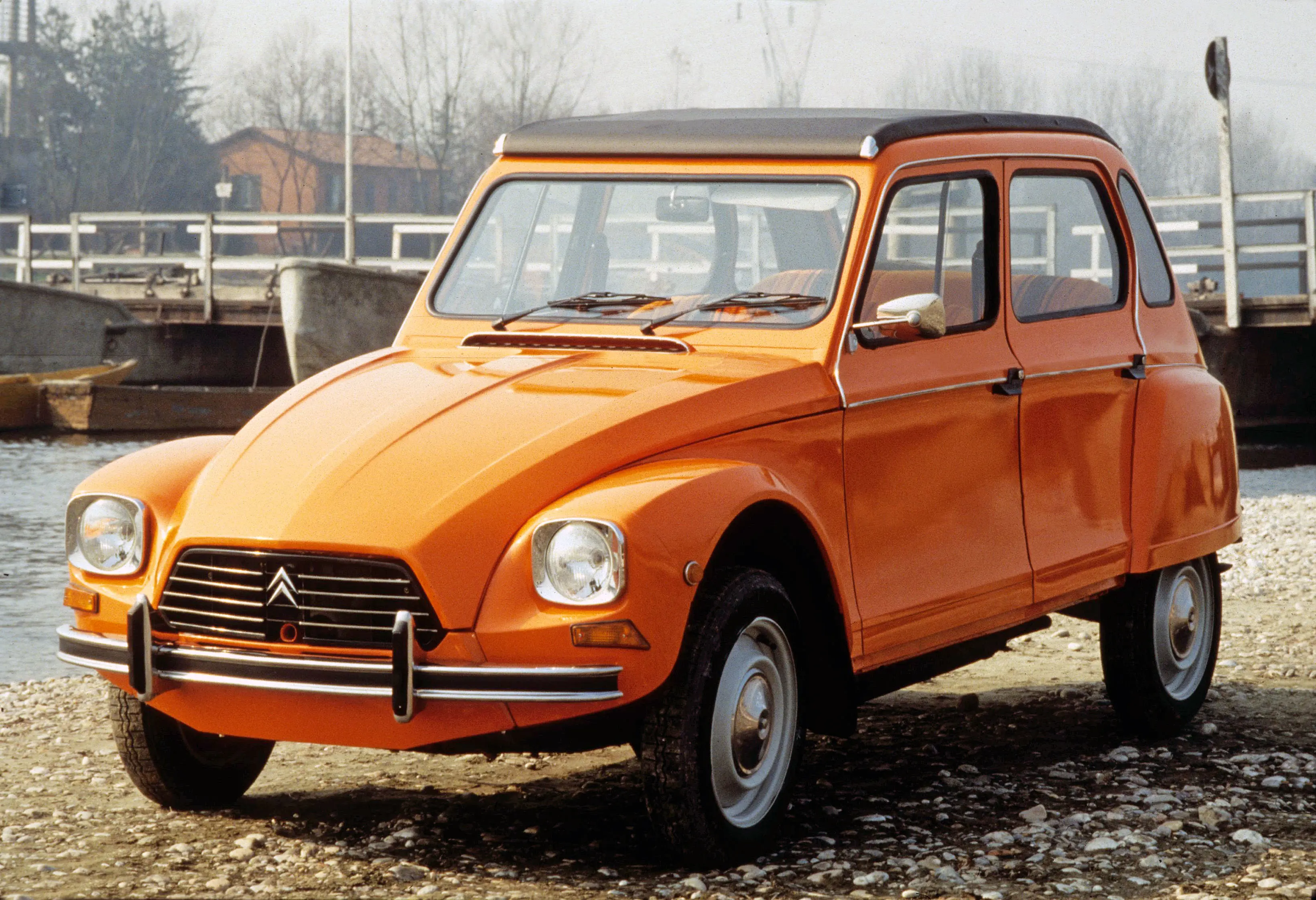THE CITROEN DYANE 6 – A CELEBRATION
10 May 2022
There is a strong case for suggesting the Dyane is one of the finest family cars of its generation. Here is a Citroën that offers all of the 2CV’s virtues – but with the bonus of a tailgate. There is that same distinctive engine note, the same amazing body roll and the same opening roof. And as with the Deux Chevaux, you could remove both bench seats for picnics or even outdoor birthday parties.
Better still, the Dyane came with utterly decadent luxuries as standard – i.e. a front ashtray and sliding front windows. Of course it lacked frivolities, such as opening rear windows, but Citroën did thoughtfully provide a starting handle and a plastic cover for the grille during winter. The dashboard vents admitted gales of fresh air while the engine fan also forced warm air into the cabin. And, unlike the early 2CV, the wipers were electric as opposed to driven by the speedometer.

It is also worth pointing out that the Dyane was the first Flat Twin Citroën encountered by Britons for many years. The company’s Slough plant assembled a UK-market 2CV between 1953 and 1959, but it did not prove to be a commercial success. Official imports of the Deux Chevaux would not commence until as late as 1974, in the wake of the OPEC Fuel Crisis. As for the 1961-1969 Ami 6, it was offered by Citroën GB to ‘special order’ only.
By contrast, the Dyane found favour with those British motorists who needed five doors and sought an alternative to the Renault 4 and 6. “What fun it is, this practical device from the Quai André Citroën”, raved Motor Sport in 1969. By 1973, Ian Fraser of Car magazine thought: “There’s very little understeer, just an amazing amount of roadholding. Obviously there is a limit somewhere but in the six weeks I had the Dyane I never really found where it was.”
Citroën commenced work on the Dyane in the mid-1960s. It was to serve as an alternative to the 2CV, which many younger French motorists now regarded as dated. The new model was also intended to lure Renault 4 owners to their local double chevron showroom and persuade Simca 1000 drivers of FWD’s merits. The Panhard division created the Dyane’s attractively angular bodywork while power was initially from the Deux Chevaux’s 425cc unit.
August 1967 saw the launch of the Dyane, and five months later, the 6 version boasted the Ami’s 602cc engine. The later models even featured cloth upholstery, winding front windows and disc front brakes. However, from 1970 onwards, the 2CV outsold it, and production ceased in 1984 – six years before the demise of its parent model.
Yet the Dyane was as entertaining as the 2CV, if not more so. The racing driver John Miles wrote in Autocar: “I would be tempted to move house without the removal van, and for those considering a moonlight flit, the headlights are adjustable from within to cope with attitude change.” He added: “The wipers grind away like an electric cockroach, but to anybody with any soul left, it is fun. Fun is also to drive around the outside and out-brake hard men in their skittish Mk 1 Capris and Mk 2 Cortinas.”
Miles further noted “Everything has a purpose or two” and perhaps this was the key to its appeal. One British advertisement claimed “Nobody in his right mind would buy a Dyane to impress the neighbours” – in which case, it was their loss.
